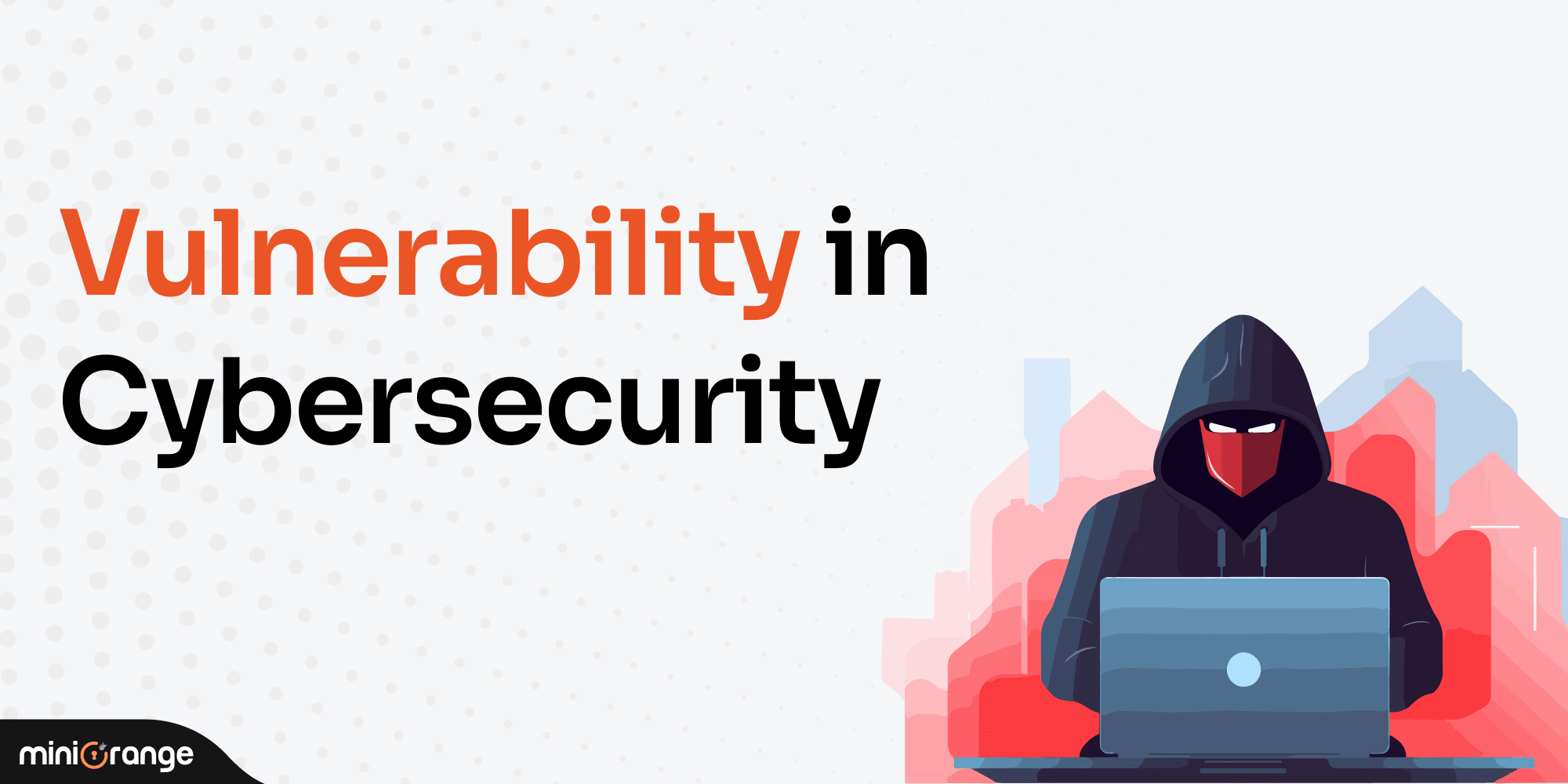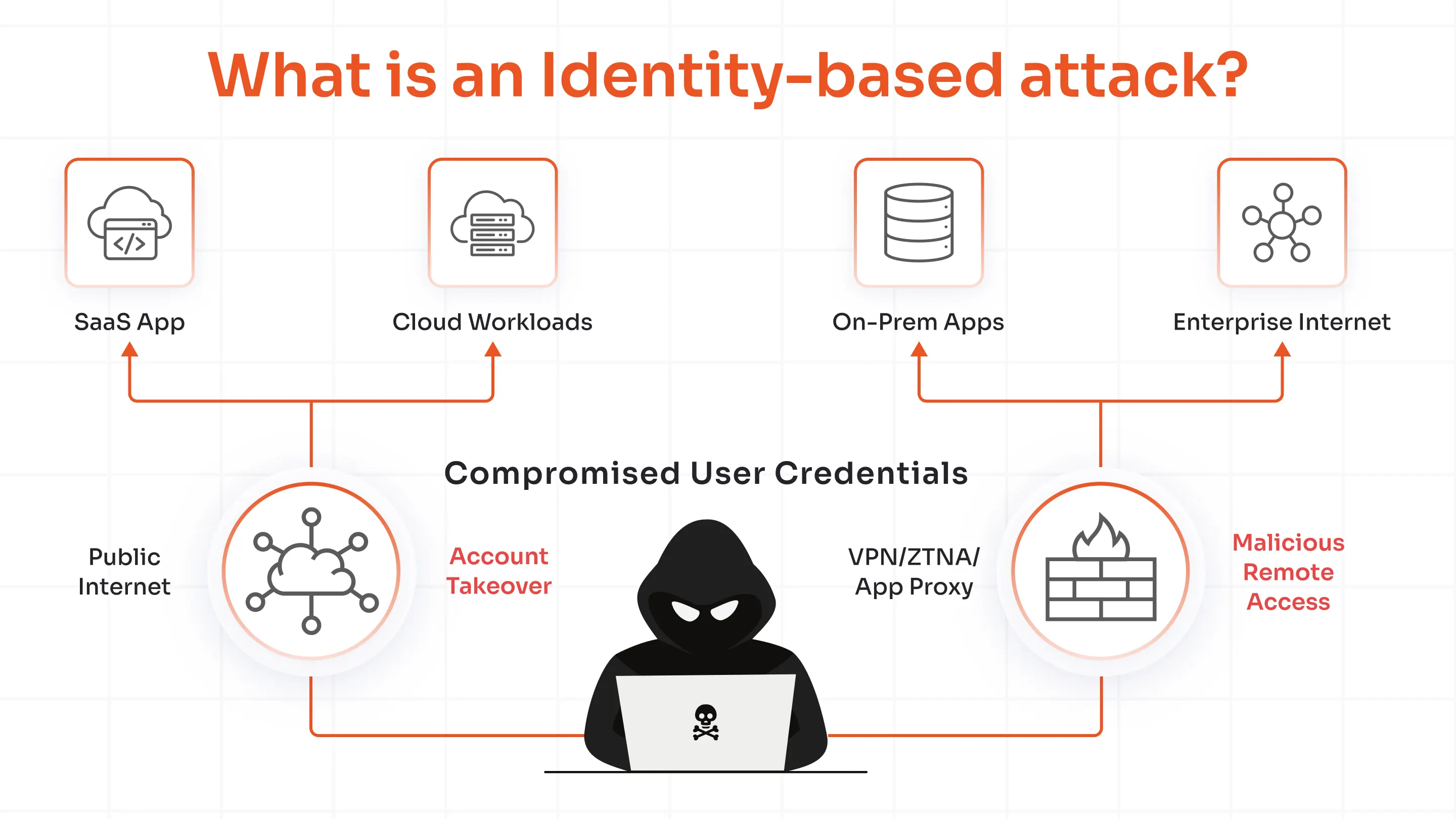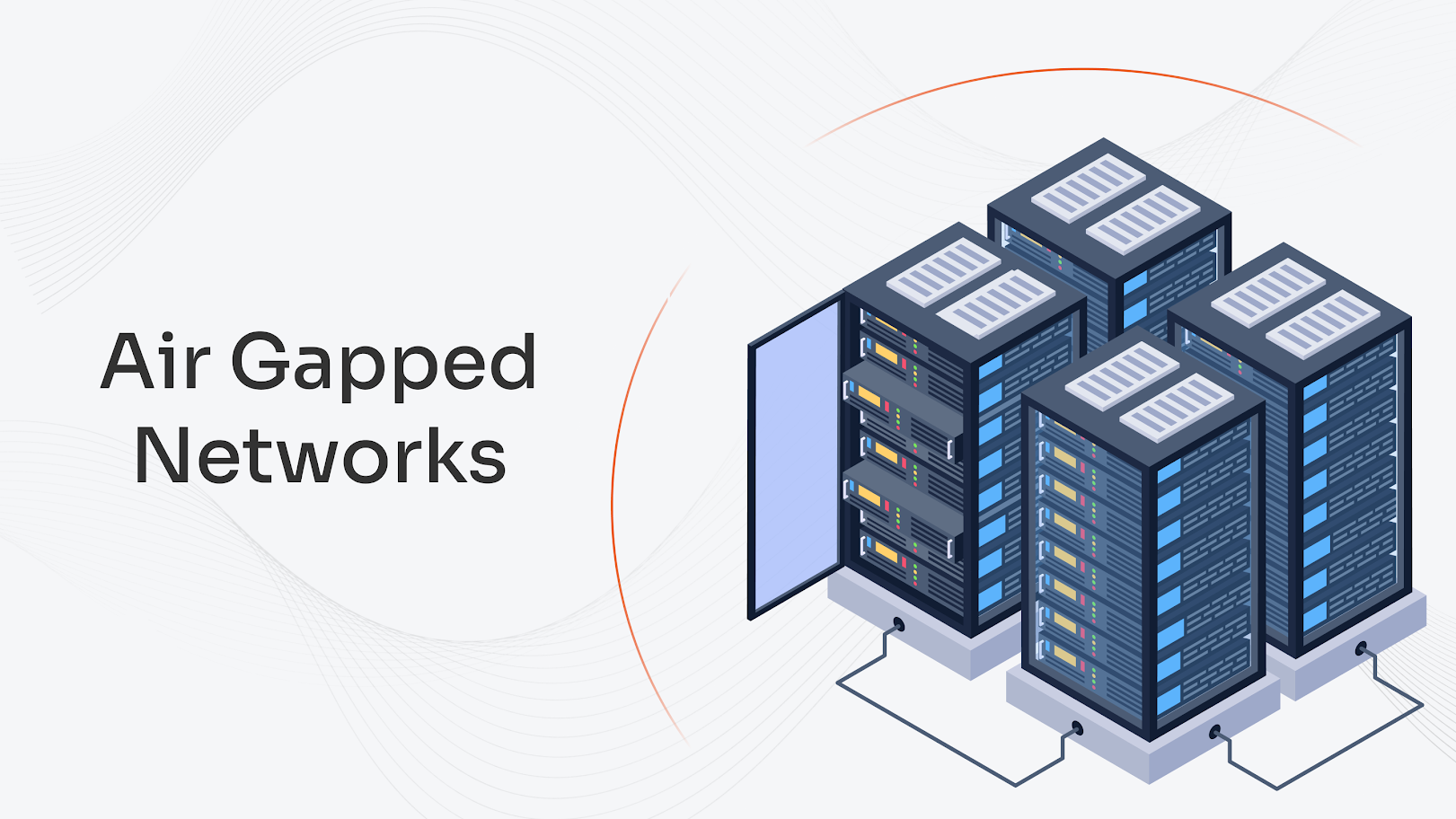Cyberattacks are growing more sophisticated every day, from phishing attempts to credential stuffing and other authentication attacks. These threats can compromise sensitive data, disrupt business operations, and erode customer trust. So, what does Multi-Factor Authentication protect against? Quite a lot. By adding extra layers of verification beyond just a password, MFA blocks unauthorized access and neutralizes common attack vectors. That’s why MFA cybersecurity has become a top priority for organizations worldwide.
miniOrange specializes in preventing MFA attacks through advanced, context-aware authentication. Our MFA solution stands as one of the strongest defenses against modern cyber threats. Before choosing an MFA method, ensure your team masters the core principles of MFA security. Then, return here to implement enterprise-grade protection effectively.
Why MFA is Critical for Cybersecurity?
Passwords alone cannot defend against modern cyber threats. Even strong credentials can be leaked, guessed, or stolen in breaches. Multi-Factor Authentication (MFA) provides essential additional security layers, ensuring attackers are blocked even if one credential is compromised.
Consider this scenario: An admin's VPN password gets exposed. Without MFA, hackers gain immediate access to critical systems. With MFA enabled through methods like one-time codes or biometric verification, the attack is stopped instantly. miniOrange MFA delivers even stronger protection by detecting and alerting about suspicious login attempts in real time, enabling swift response before damage occurs.
In today's threat landscape, MFA has evolved from being recommended to absolutely essential for enterprise security.
What Types of Cyber Attacks Does MFA Prevent?
MFA blocks critical attack vectors by requiring identity verification beyond passwords. Here’s how it neutralizes top threats:
1. Phishing Attacks
Attackers impersonate trusted entities to steal credentials via fake login pages. MFA stops them by requiring a second factor (OTP, biometrics, or push notifications). miniOrange MFA also alerts users of unauthorized attempts, enabling rapid response.
2. Brute Force Attacks
Automated password-guessing fails against MFA. Even if passwords are cracked, attackers hit a wall at the second authentication layer. miniOrange adds context-aware checks (suspicious IPs/device) to block these attempts.
3. Credential Stuffing
Hackers exploit reused passwords from past breaches. MFA renders stolen credentials useless without the second factor (e.g., TOTP or biometrics). miniOrange ensures accounts stay secure despite password leaks.
4. Man-in-the-Middle (MITM) Attacks
Intercepted credentials alone can’t bypass MFA. miniOrange uses device-bound encryption and dynamic verification to prevent session hijacking, making MITM attacks ineffective.
5. SIM Swapping & Social Engineering
SMS-based MFA is vulnerable to SIM hijacking. miniOrange offers secure alternatives (app-based auth, hardware tokens) and behavioral analytics to detect anomalies in real time.
Key Benefits of Using MFA for Cyber Attack Prevention
Multi-Factor Authentication (MFA) is a critical defense against modern cyber threats and delivers powerful benefits of MFA for organizations. By requiring multiple verification steps, MFA blocks unauthorized access even when passwords are compromised. These core benefits of MFA demonstrate how it strengthens security:
1. Reduced Risk of Unauthorized Access
MFA significantly lowers the chances of unauthorized logins by ensuring that attackers need more than just a stolen password to break in. Whether it’s a one-time password (OTP), biometric scan, or push notification approval, these additional steps serve as roadblocks that 99.9% of automated authentication attacks simply cannot overcome.
2. Enhanced Data Security and Compliance
With increasing regulatory pressure around data protection (like GDPR, HIPAA, and PCI-DSS), MFA helps organizations meet compliance requirements by proving that access to sensitive data is tightly controlled. It also reduces the surface area for breaches, protecting personal, financial, and business-critical data with advanced, verifiable access layers.
3. Improved User Trust and Brand Reputation
Customers and employees are far more confident interacting with a platform that takes data protection seriously. By adopting MFA, businesses demonstrate a proactive commitment to cybersecurity, boosting user trust and enhancing brand reputation, especially in industries where credibility and confidentiality are everything.
4. Lower Financial and Reputational Damage
The cost of a data breach can be catastrophic both financially and reputationally. Implementing MFA is a low-cost, high-impact security measure that helps organizations avoid massive losses from ransomware, fraud, and recovery operations. According to IBM, the average cost of a breach in 2024 was $5.17 million, far more than the cost of deploying MFA across an organization.
5. Protection Against Phishing and Social Engineering
Even when users fall victim to sophisticated phishing emails or SMS scams, 2FA authentication and MFA prevent attackers from accessing accounts without the second verification factor. miniOrange MFA strengthens this protection with phishing-resistant methods including FIDO2, WebAuthn, and device-bound push notifications, effectively blocking even the most targeted human exploits.
6. Easy Integration and User-Friendly Experience
Modern MFA solutions, including miniOrange, are built for smooth integration with existing systems, whether it's cloud apps, VPNs, or on-premise environments. With intuitive authentication options like biometric login or tap-to-approve push notifications, security doesn’t come at the cost of usability.
7. Scalability and Future-Readiness
MFA isn’t a static solution; it evolves with your organization. As your user base grows and threats change, MFA can adapt with new authentication methods and dynamic policies. This ensures your security strategy stays resilient in the face of tomorrow’s cyber threats.
Why MFA is Essential for Cybersecurity
Over 80% of hacking-related breaches occur due to weak or stolen passwords. Relying solely on single-factor authentication exposes organizations to credential theft, phishing attacks, and brute-force attempts. Multi-Factor Authentication (MFA) addresses this weakness by requiring users to verify their identity using two or more independent factors, such as a password, a mobile device, or a biometric signature.
Even if one credential is compromised, unauthorized access is prevented unless all authentication factors are successfully verified. This layered defense model significantly reduces the risk of unauthorized access and account takeovers.
Modern MFA solutions go beyond static verification. With Adaptive MFA, systems can analyze risk context, such as login behavior, device reputation, and geolocation, and apply dynamic security policies. For example, a user accessing corporate resources from a known device at a regular location may face minimal friction, while a login attempt from an untrusted network or unusual location may trigger step-up authentication like biometrics or OTP verification.
MFA also helps meet compliance requirements across frameworks like GDPR, HIPAA, and NIST, while improving operational security. And because today’s MFA options are designed for ease of use and seamless integration, security teams can deploy them with minimal disruption to users or IT workloads.
Best MFA Methods to Block Cyber Attacks
Not all authentication methods are created equal. Here are the most effective MFA techniques to safeguard against cyber threats:
1. Push Notifications (Most User-Friendly)
Push notifications offer a quick and secure way to verify logins. When a user attempts to sign in, they receive a prompt on their registered mobile device asking for approval. This method is highly resistant to phishing and ensures that the user is in control of every login attempt in real-time. It's both fast and easy, making it ideal for everyday access.
2. Time-Based OTP (TOTP) via Authenticator Apps
TOTP uses a time-sensitive code that refreshes every 30 seconds, generated on an app like Google Authenticator or miniOrange Authenticator. Since the code exists only on the user’s device and changes continuously, it offers strong protection against replay and brute-force attacks. It’s a lightweight method that doesn’t require internet or mobile service.
3. Biometric Authentication (Fingerprint/Face ID)
Biometrics like fingerprints and facial recognition add a physical layer to identity verification. They are extremely hard to replicate and don’t rely on memorized or stored credentials. Biometric MFA is ideal for high-security use cases and integrates well with modern smartphones and enterprise systems.
4. Hardware Tokens (YubiKey, RSA SecurID)
Hardware tokens generate one-time codes or use cryptographic signatures to authenticate users. These physical devices are disconnected from the internet, making them immune to many online threats like remote phishing or malware-based attacks. Though slightly less convenient than mobile methods, they offer unmatched security in critical environments.
How miniOrange MFA Enhances Security
miniOrange MFA goes beyond traditional password-based authentication by offering layered, adaptive, and user-centric security controls. Our solution supports 15+ robust authentication methods, enabling organizations to enforce secure access across applications, VPNs, cloud platforms, and on-premise systems.
From OTPs to biometrics and device-based verification, miniOrange MFA helps mitigate the most common cyber risks, including phishing, credential stuffing, and brute-force attacks. Whether you're a small business or a large enterprise, you can customize authentication flows based on user roles, device types, and access sensitivity, all while maintaining a seamless user experience.
Authentication, in its simplest form, is the process of verifying that someone is who they claim to be. With miniOrange, this process becomes dynamic through context-based authentication, which adjusts security requirements based on factors like login location, device health, and time of access.
Conclusion
Cyber threats never stop advancing, and neither should your security. In today's digital world, relying solely on passwords leaves you vulnerable. Modern protection demands multiple types of authentication layers combined with real time risk assessment.
miniOrange MFA provides this essential security, blending powerful authentication with smart adaptive controls (learn about the difference between authentication and authorization for deeper insight). Businesses get enterprise grade protection against breaches while keeping access simple, ensuring compliance, securing critical data, and strengthening user confidence all at once.
Start your free trial today to discover how miniOrange builds enterprise-grade, resilient authentication security for your organization.
FAQ's
Which cyber attacks does MFA prevent?
MFA helps prevent phishing, brute-force attacks, credential stuffing, man-in-the-middle (MITM) attacks, and unauthorized access due to stolen passwords.
Is SMS-based MFA secure?
SMS-based MFA offers basic protection but is vulnerable to SIM swapping and interception. More secure alternatives include TOTP, biometrics, or push-based authentication.
Can MFA be hacked?
While no method is 100% foolproof, MFA drastically reduces the chances of account compromise. Attacks on MFA are rare and typically require targeted, sophisticated methods.
Why is MFA required for compliance?
Regulations like GDPR, HIPAA, and NIST require strong access controls. MFA ensures only authorized users can access sensitive data, helping organizations meet compliance standards.




Leave a Comment